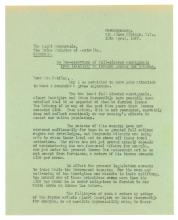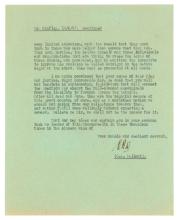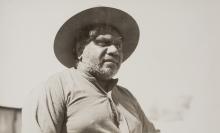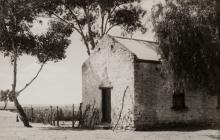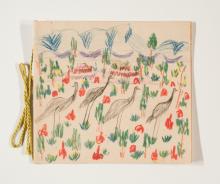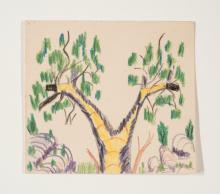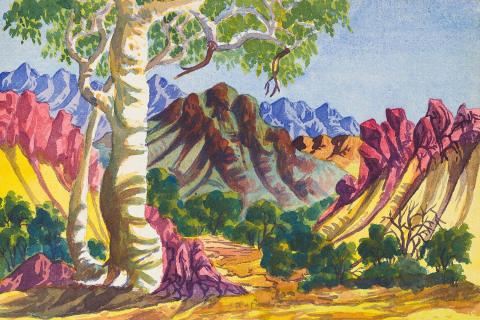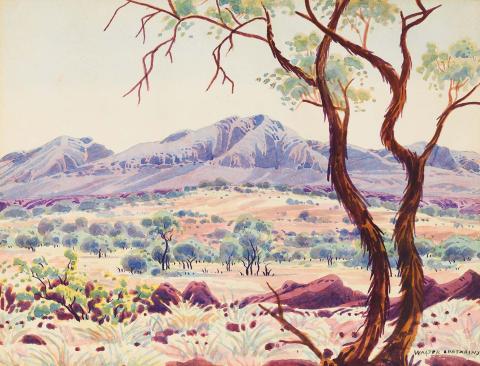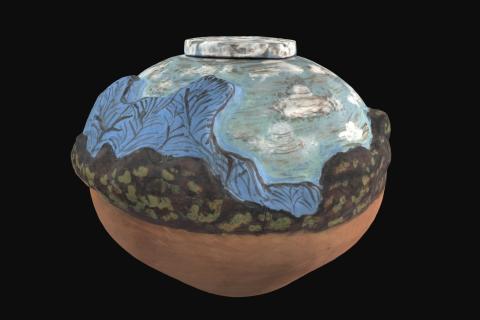Oswald A Wallent Collection of Hermannsburg Material
What is the Hermannsburg Historic Precinct?
Renowned watercolourist and Arrernte man Albert Namatjira was born at Ntaria, on the Hermannsburg Lutheran Mission, in 1902. During his lifetime, the mission would become a thriving artistic community with a profound legacy.1
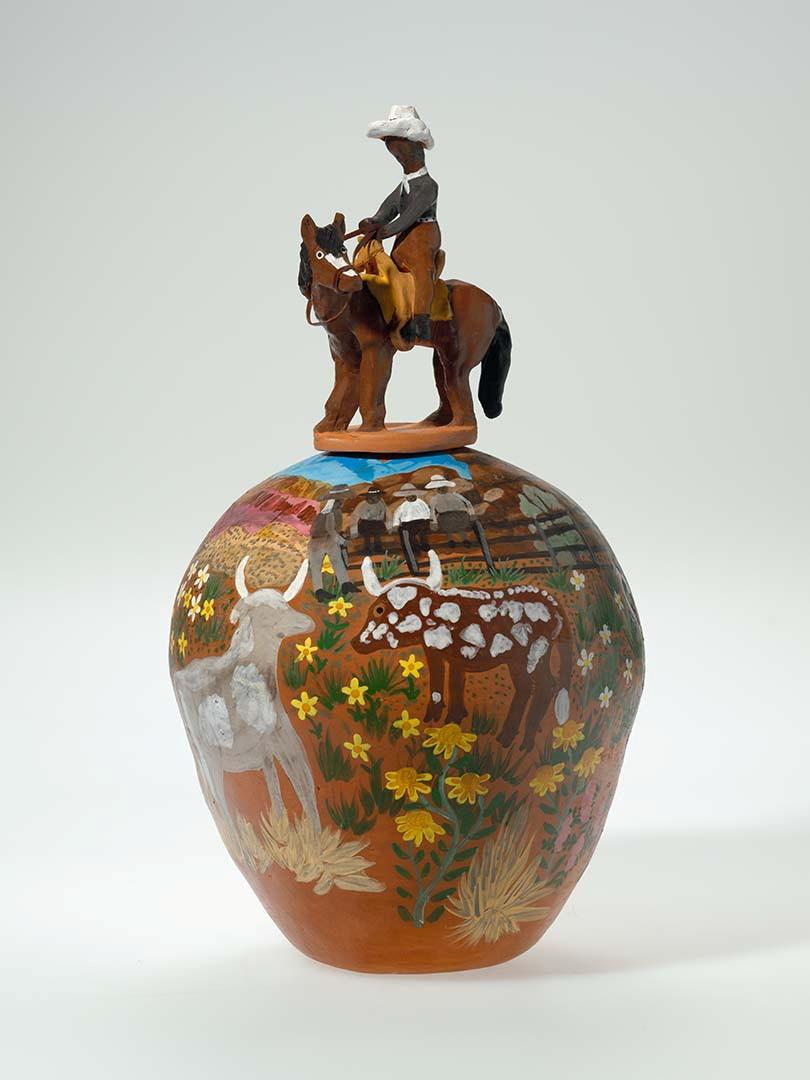
Located in Brisbane’s Gallery of Modern Art, the QAGOMA Research Library holds a collection of materials from Hermannsburg’s early decades. The Oswald A Wallent Collection includes correspondence, photographs, books, exhibition catalogues and newspaper clippings that offer a fascinating glimpse of life at Hermannsburg in the mid-1930s and 40s.
The various missionaries who served at the Finke River Mission, as it was then known, were active in recording and learning the languages of the Western Aranda (Arrernte) people to help spread Christianity, and examples in the Wallent Collection include a book dated 1904 of stories from the Bible and hymns and prayers translated into Arrernte by Carl Strehlow, mission superintendent from 1894 to 1922.
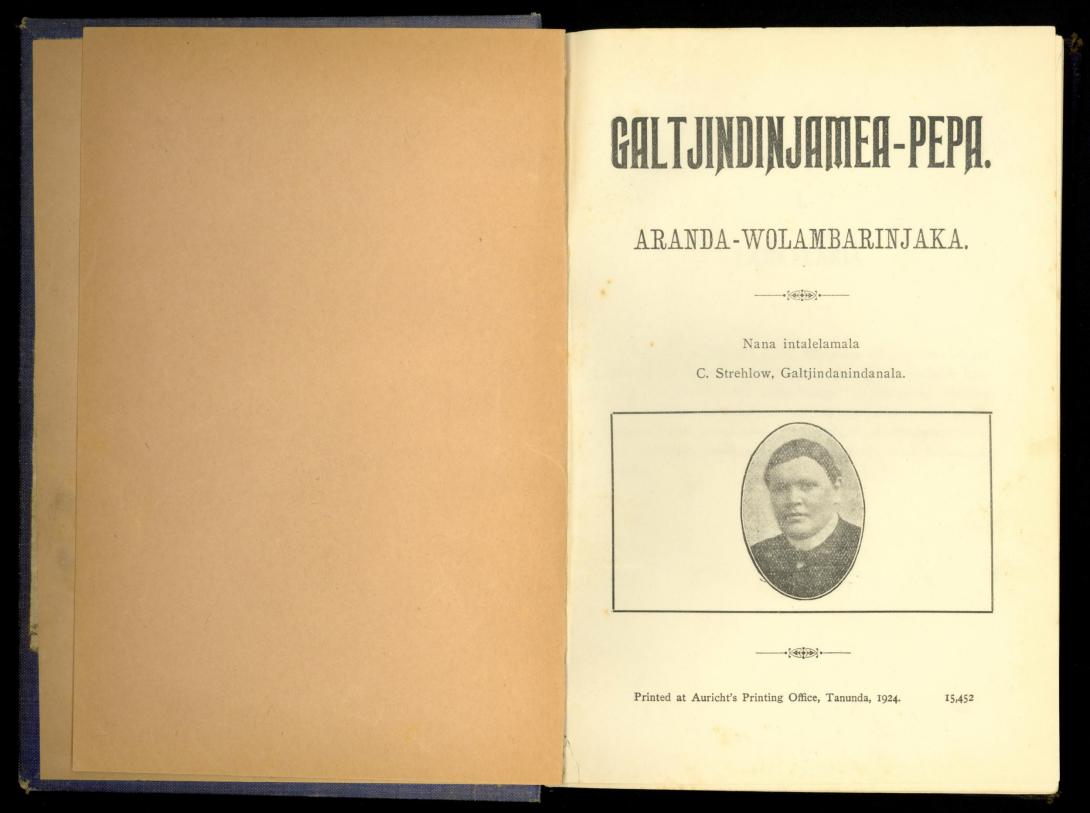
Galtjindinjamea Pepa: A 1924 Bible published in Arrernte language / Collection: Oswald A Wallent Collection, QAGOMA Research Library / Photograph: QAGOMA
Who was Oswald Wallent?
Established by Lutheran missionaries in 1877, Hermannsburg was named after the mission society near Hanover in Germany where they had trained. Oswald (‘Ossie’) Wallent was employed at the mission between 1946 and 1949 either as a storeperson or bookkeeper, having previously worked on Lutheran missions in New Guinea. Wallent’s father, FCG Wallent of Tanunda, South Australia, spent 45 years working for missions, including Hermannsburg, as a buyer and a member of the Lutheran Mission Board.2 A series of small photographs, many annotated in German, show Wallent senior’s visit to the mission and to the nearby Kaporilya Springs in 1935, where a vital pipeline to bring water to the mission was under construction. During this visit — according to a letter from Oswald Wallent to his cousin Joyce D Batty, author of Namatjira: Wanderer Between Two Worlds (1963) — Namatjira presented Wallent senior with a double-sided painting, a work Namatjira later signed and dated and, on one side, wrote ‘my first painting’.
A hotspot for visiting artists
With the opening up of Central Australia in the 1930s, frequent visitors to the mission included the artists Jessie Traill, Arthur Murch and Violet Teague. Namatjira acted as cameleer for Teague’s sister Una during her visit in 1932. However, it was the watercolourist Rex Battarbee (1893–1969), travelling with John Gardner, who became important to Namatjira’s development as a painter.3
Battarbee first visited in 1932 using the mission as a base for his painting expeditions and, following an approach by Pastor Albrecht, the mission superintendent, mentored Namatjira in the technique of watercolour painting. Letters exchanged between Battarbee and Wallent about sales and exhibitions — including those of Otto and Edwin Pareroultja — reflect their roles as members of committees formed to deal with the growing interest in the Hermannsburg artists. Wallent also wrote several times in 1947 to then Prime Minister Chifley about what he considered the ‘gross injustice’ of Namatjira and Edwin Pareroultja being expected to submit income tax returns on their earnings, arguing unsuccessfully in strongly paternalistic terms against penalising the artists and those ‘trying to raise the level of these nomads’.
In one of several letters written in 1947, Oswald A Wallent urges Prime Minister Chifley to exempt Hermannsburg artists from paying income tax / Collection: Oswald A Wallent Collection, QAGOMA Research Library / Photographs: QAGOMA
Other visitors to the mission Wallent encountered included journalist Arthur Groom (1904–53) who, after visiting Central Australia and Hermannsburg in 1946 and 1947, wrote the book I Saw a Strange Land (1950), a copy of which is inscribed by the author to Wallent and his wife. Sydney-based photographer Edward Searle (1887–1955) wrote in 1947 thanking Wallent and Reverend Albrecht for their hospitality, enclosing photographs he took ‘during my short but very interesting stay’.
Edward Searle / 1887–1955 / Photographs taken during the late 1940s at Hermannsburg (Ntaria), including of Albert Namatjira (far left) / Collection: Oswald A Wallent Collection, QAGOMA Research Library
Unmistakably Hermannsburg
A small photograph of the October 1951 Kaporilya Day, the annual day of thanksgiving held to mark the completion of the important water pipeline from Kaporilya Springs, is inside a hand-drawn card given to Wallent and his wife. This is one of ten cards drawn by children from the Hermannsburg Mission School, variously signed and all unmistakably sharing some of the characteristics of the ‘Hermannsburg school’ of art. The drawings reflect the surrounding landscapes, some showing the MacDonnell Ranges, kangaroos and, in some cases, flowers — possibly inspired by the local flora, and more likely linked to the embroidery taught to the mission women.4
Cards made by children from Hermannsburg Mission School c.1940s / Collection: Oswald A Wallent Collection, QAGOMA Research Library / Photographs: QAGOMA
Wallent left the mission in 1949 for reasons that are unclear, but wrote to Battarbee that it was a letter ‘from the Chairman which proved the last straw’. He moved to Queensland where he continued his support for the mission and its artists, as shown in the catalogue introductions (as well as frank personal assessments of the artists) for the exhibitions of works from his collection held in July 1949 and June 1954, sponsored by the Brisbane Telegraph. (Proceeds of the 1954 catalogue sales were to go to the mission for water reticulation improvements.)
Wallent’s collection, assembled during his years of involvement at the mission, was sold at Sotheby’s in Melbourne in 2006. Given the Gallery’s interest in Hermannsburg School artists, it acquired Wallent’s collection of documents, which are available for researchers. Here, for the first time, a selection of these materials have been digitised for you to consider in their context: alongside historical and contemporary works made by artists in the Hermannsburg community.
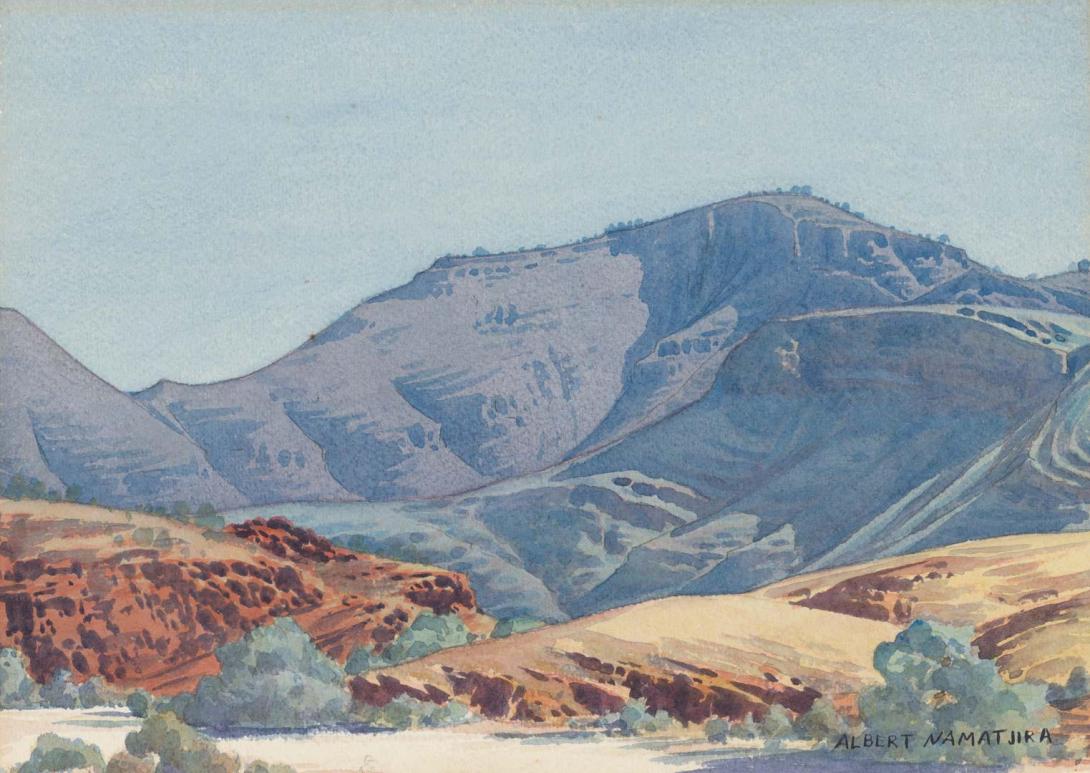
Endnotes
- This text was adapted from an article in Artlines 3-2008, by Judy Gunning, Information and Publishing Services Manager, QAGOMA, and with thanks to Senior Librarian Jacklyn Young.
- Sotheby's Aboriginal Art, including the Wallent Collection of Hermannsburg Watercolours and Ephemera [auction catalogue], Melbourne, 31 October 2006, p.14.
- Alison French, Seeing the Centre: The Art of Albert Namatjira 1902–1959 [exhibition catalogue], National Gallery of Australia, Canberra, 2002, p.4, 7.
- Licienne Fontannaz, Then and Now: Pitjantjatjara and Aranda Artists 1930s–1990s [exhibition catalogue], Australian Exhibitions Touring Agency, in association with Tandanya National Aboriginal Cultural Institute, Melbourne and Adelaide, 1996, p.11.
Explore the Hermannsburg School

Digital Story Introduction
THE HERMANNSBURG SCHOOLQAGOMA COLLECTION: Hermannsburg painters
Read digital storyDigital story context and navigation
THE HERMANNSBURG SCHOOLExplore the story

Digital Story Introduction
THE HERMANNSBURG SCHOOLQAGOMA COLLECTION: Hermannsburg Potters
Read digital story
Digital Story Introduction
THE HERMANNSBURG SCHOOLQAGOMA COLLECTION: Hermannsburg painters
Read digital story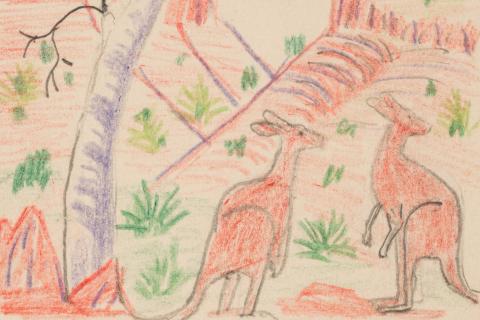
Digital Story Introduction
THE HERMANNSBURG SCHOOLOswald A Wallent Collection of Hermannsburg Material
ReadAbout this page
Related resources
